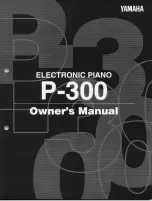
∑
/ SERIAL
It's the first of the two switches that convey the audio signal,
forming the audio path articulation settings into Vertice.
Two directions available:
• ∑
route the audio signal to the Parallel summing section
where the three processed signals are mixed
•
SERIAL
route the signal to the following filterboard (in
this case the B-filter receive the signal from the A-filter).
This selection have an heavy impact on the logic beyond the
use of the entire VERTICE and should be the first question
you may answer to: where I need to direct this signal?
The answer must be formulated thinking at what kind of
tone you have in mind. Bass line, drum kick, snares, heavy
wobble and so on are generally monophonic signals, so probably using the
SERIAL
modalities can be effective.
Atmospheric pads, melodic leaders, long evolving soundscapes, piano sequences etc. generally are benefited
by
STEREO
treatment, discussed in the following note.
Obviously VERTICE give you also some mid-way position you can use for manipulate timbres with a more
creative approach, combing various routing themes with
MODE
,
EMPHASIS
,
LEVEL
,
CV
and other heavy impacting
settings.
∑
/ STEREO / SERIAL
It is identical to the previous control but it has the peculiarity
of the
STEREO
mode.
Obtained by a true bypass of the C-filterboard, which
actually remains available for a third signal, this routing
status can allow you to feed VERTICE with a stereo signal.
LEFT to A and RIGHT to B
, balanced via the dedicated Audio
pots can make a true stereo couple from the related two
output ports. The stereophonic signal is obviously
processed by the two A and B filters, linked via
MASTER
Cutoff
control. In this configuration
PARALLEL
becomes
MONO and presumably the LEFT out.
SERIAL
instead
becomes STEREO or the RIGHT output of your stereo couple.
Remember to hard pan the relative input channels of the mixer to obtain a wide-open stereo field.
The
∑
Circuit
The summing point is a sensible part of every musical machine: it have to sum properly, without
unbalancing between channels, and to carry a good amount of signal without distortion. Whitout distortion?
Why? It is not true, and phisically impossible: you
always introduce some sort of harmonic distortion using a
module. Not even the stupid cable is really transparent with all its resistive and inductive behaviors.
Our
∑
module is an simple active op-amp circuit with zero gain factors and hi-frequency reduction obtained
by a quite normal integrator configuration. The signal flow through low values resistance (the lower is an 82Ω)
in order to control Johnson noise. Nothing more than what your electro-techer want from you :)
The stupid switches
Why Vertice cost a lot of money? Because it is hand made, because it is unique and so on all the various
reason that everyone tells you everyday, the quality, the quality also if they are producing drawing pins or
toilet paper the QUALITY seems everywhere. Well, I tell you why Vertice cost so much: this stupid swithches.
They are essentially more bigger than usual, to improve manipolation, more sturdy than usual, to last, and
more aestethically appealing, to inspire you "touch my panel" will. So, they cost at least 10 times than the
regolar, smaller ones, but they worth it.
THE COMPONENTS
[
35
]
Summary of Contents for Vertice
Page 1: ...USER S MANUAL...
Page 2: ......
Page 5: ...Dedicato a Walt Bruno e Lorenzina con immenso amore Stefano...
Page 68: ...Ratio et Cogitatio Unicam Fidem Sunt...
Page 69: ......
Page 70: ......
















































